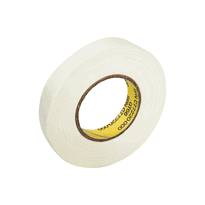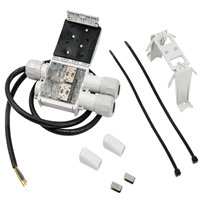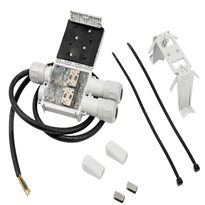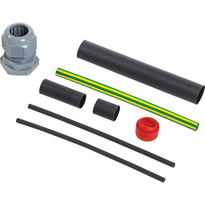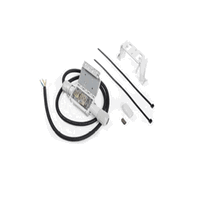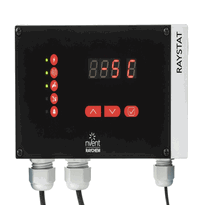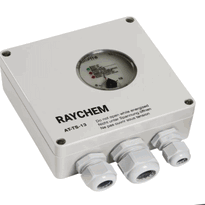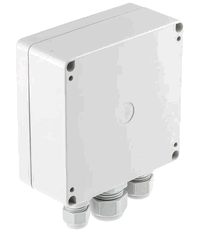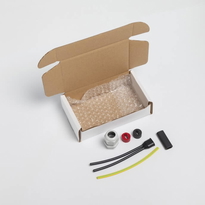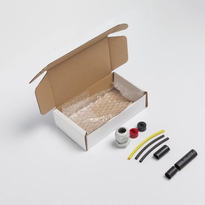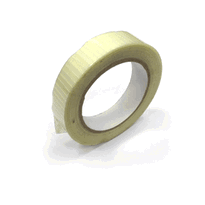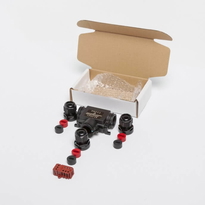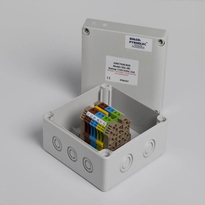Warming Tape for Pipes
Warming tapes for pipes are heating systems designed to prevent freezing and damage by providing consistent or self-regulating heat along pipe surfaces. These systems are suitable for residential, commercial, and industrial settings across the UK. Available in various types—including self-regulating, constant-wattage, and high-temperature options—each comes with its own specific installation and environmental requirements.
Proper installation is crucial to ensure safety and efficiency. This involves securing the tape without overlaps, maintaining contact with the pipe surface, and observing the manufacturer's guidelines. Regular maintenance and inspection can help optimize the performance and longevity of the system.
Selecting the appropriate warming tape depends on factors such as pipe material, size, and operational environment. Consulting a professional or adhering to manufacturer instructions will facilitate an effective and safe installation. With the right approach, warming tapes can offer a reliable solution to protect pipes from freezing, thereby safeguarding property and ensuring continuous operation during cold weather conditions.
Types of Heating Tape and Their Features
There are various types of heating tape available, each designed to meet specific operational needs and environmental conditions. Understanding heat cable technology, it's important to recognize the distinctions between different types to select the most suitable option for your application. Some tapes are designed with safety features such as ground fault protection, ensuring safer operation in sensitive environments. Self-regulating heat tapes automatically adjust their heat output based on ambient temperature. This helps to conserve energy and reduces the risk of overheating. These tapes are considered safer due to their variable heat output and are ideal for environments with fluctuating temperatures. They’re commonly used for freeze protection and maintaining pipe temperature, making them a versatile choice for many UK settings. Non-regulating, or constant-wattage tapes, provide a fixed heat output regardless of surrounding temperatures. Typically, these tapes are more affordable initially but may result in unnecessary energy consumption and potential equipment damage if not carefully monitored. They’re best suited for applications where constant heat is essential and environmental conditions remain stable. Silicone rubber tapes can withstand temperatures up to 230°C (approximately 450°F). They’re resistant to chemicals and moisture, making them suitable for industrial environments where robust, reliable performance is required. Their flexibility and high-temperature capacity make them a popular choice in demanding settings. Fiberglass-insulated tapes and Samox high-temperature tapes are designed to operate in high-heat environments. The latter, offering durability up to 760°C (about 1400°F), is suitable for extreme conditions where maximum heat resistance is necessary. When selecting a heating tape, it’s also important to consider local safety standards and regulations to ensure compliance and safe operation. Choosing the right heating tape depends on the specific requirements of your application, including temperature range, environmental exposure, and safety considerations.
Benefits and Key Applications of Pipe Warming Tapes
Pipe warming tapes offer a range of important benefits, particularly by providing effective freeze protection and safeguarding various piping systems from damage. They deliver direct heat to pipes, preventing the water inside from freezing and expanding—an expansion that can lead to pipes bursting. This early intervention helps to reduce the risk of costly water damage and structural harm, ensuring a steady flow of liquids even during cold weather conditions. Modern self-regulating pipe-warming tapes are designed to be energy efficient, adjusting their heat output according to the ambient temperature. This ensures optimal performance while minimizing energy wastage and reducing operational costs. Their versatility makes them suitable for a wide variety of pipe materials, diameters, and shapes, making them applicable across residential, commercial, and industrial settings. Installations are generally easy and straightforward, often involving direct connection to a suitable power supply. Many users find they can implement these systems without the need for professional assistance, making them a practical choice for safeguarding plumbing and process systems during winter months. These tapes are compatible with various pipe types and environments to enhance versatility and ease of installation.
Additionally, advanced temperature controls and monitoring options further improve their efficiency and safety, allowing users to customize and oversee the heating system effectively.
Installation Guidelines for Safe and Efficient Heating
Proper installation of heating tape begins with thorough surface preparation and inspection. All pipe surfaces must be clean and dry to ensure optimal heat transfer and to prevent damage, particularly with high-temperature models. The tape should be examined for any visible damage, such as tears or cuts, and replaced if necessary to maintain safety and efficient operation. Cleaning the surface to remove dirt, debris, or foreign materials is essential because foreign material hinder heat transfer and can damage certain heating tapes. Installing on leaking pipes must be avoided, as moisture can cause electrical hazards. Any dirt, liquids, or foreign materials should be removed to prevent impairing heat distribution or damaging the tape. Accurate measurement of the pipe’s diameter and surface to select the correct tape length and type is crucial for effective heating performance. Position the tape along the underside of horizontal pipes or on the weather-facing side of vertical pipes. Ensuring proper adhesion and contact between the tape and the pipe surface improves heat transfer efficiency and prolongs the lifespan of the heating element. Secure the tape with non-conductive tape approximately every 15–20 centimeters, ensuring there are no overlaps or gaps that could lead to hotspots or inefficiencies.
Energy Efficiency and Cost-Effective Use Cases
Self-regulating heat tapes provide notable energy efficiency advantages by adjusting their output according to surrounding temperatures, thus minimizing unnecessary electricity use. This smart adjustment ensures that heat tapes generate only the warmth required at any given moment, leading to lower operational expenses and supporting energy-conscious settings such as residential plumbing. When compared to constant wattage alternatives, self-regulating tapes are more cost-effective in the long term due to their adaptable power consumption. They excel in regions with varying winter conditions, preventing overheating during milder days and guaranteeing sufficient protection during colder spells. Their effectiveness can be further enhanced when paired with thermostats and proper insulation. - They can be utilized across a wide range of pipe types and environments, maximising both cost savings and effective protection. Enhanced energy savings contribute directly to increased affordability and sustainability over time. Their straightforward installation process and minimal maintenance requirements further enhance overall cost efficiency. Properly maintaining weather-resistant and UV-stable materials extends the lifespan and effectiveness of heat tapes in harsh weather conditions.
Conclusion
Proper selection, careful installation, and appropriate use of heating tapes ensure effective pipe protection against freezing temperatures. Understanding the different types and their features allows users to optimise energy efficiency and safety. Following manufacturer guidelines and considering cost implications help maximize the tapes’ benefits while minimizing operational costs. Implementing these practices ensures reliable, continuous pipe warming, reduces the risk of damage, and supports long-term infrastructure integrity in cold conditions without unnecessary expenditure.








